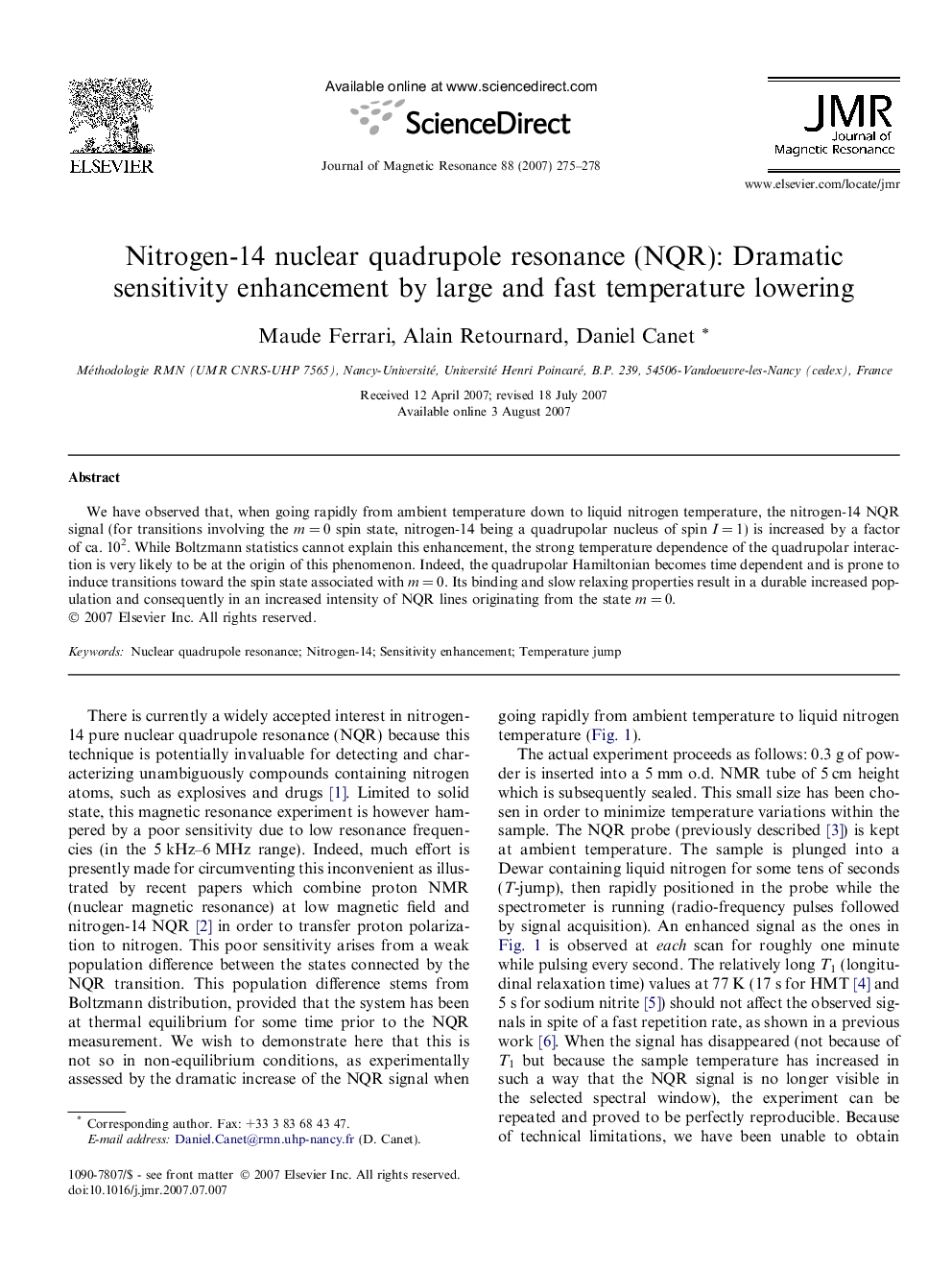| Article ID | Journal | Published Year | Pages | File Type |
|---|---|---|---|---|
| 5407328 | Journal of Magnetic Resonance | 2007 | 4 Pages |
Abstract
We have observed that, when going rapidly from ambient temperature down to liquid nitrogen temperature, the nitrogen-14 NQR signal (for transitions involving the m = 0 spin state, nitrogen-14 being a quadrupolar nucleus of spin I = 1) is increased by a factor of ca. 102. While Boltzmann statistics cannot explain this enhancement, the strong temperature dependence of the quadrupolar interaction is very likely to be at the origin of this phenomenon. Indeed, the quadrupolar Hamiltonian becomes time dependent and is prone to induce transitions toward the spin state associated with m = 0. Its binding and slow relaxing properties result in a durable increased population and consequently in an increased intensity of NQR lines originating from the state m = 0.
Related Topics
Physical Sciences and Engineering
Chemistry
Physical and Theoretical Chemistry
Authors
Maude Ferrari, Alain Retournard, Daniel Canet,
